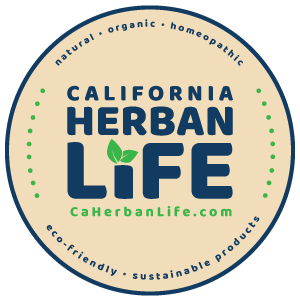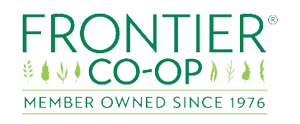When the weather begins to warm and we see signs of the earth waking again, many of our thoughts turn to starting anew as well. More daylight reveals some grime that needs our attention. Like animals coming out of hibernation, we have more energy.
Here’s what you need to know to have a greener clean this year.
1. Ventilate
Even if you don’t knowingly bring chemicals into your home, indoor air still has far more pollutants than most outside air. Our furniture, water, and cooking all put compounds in the air that we’re better off not breathing. Letting fresh air into your home as soon as weather permits will clear the air and help you breathe better.
If you want to add a truly fresh (rather than chemical-laden) scent to your home, consider adding some essential oils to your cleaning products. Or place a bowl of baking soda with a few drops of your favorite essential oil on a counter to absorb odor and add fragrance. I particularly enjoy the uplifting scents of bergamot and lemon.
2. Clear the clutter
With boots, coats, hats, scarves, gloves and all the gear associated with winter, the colder months can challenge (or enhance) our tolerance for clutter. After you’ve packed away the cold-weather togs, look around to see if there are other areas of your home that are more cluttered than you might like. Maybe it’s toys or books messily shoved onto shelves, or a closet that’s become unusable because it’s so crammed with stuff.
Choose an area whose clutter annoys you and tackle with it an eye to getting of rid things you don’t need, use, or want. A trip to donate your unwanted stuff to your local thrift shop can be another satisfying ritual of spring cleaning. Then enjoy your de-cluttered home and the extra time you’ll enjoy not having to manage the mess.
3. Gather non-toxic cleaners
Many cleaning projects—floors, surfaces, and windows—can be handled with a simple solution of vinegar and water. For extra cleaning power plus a pleasant scent, add essential oils like lemon or orange. Castile soap and baking soda help with most scrubbing projects. There’s also no shortage of recipes for homemade cleaners made from nontoxic ingredients you probably already have on hand.
Some simple recipes to get you started:
- All-purpose cleaner: Combine 1 part white vinegar with 4 parts water in a spray bottle.
- Glass and window cleaner: Use 2 teaspoons vinegar in a quart of water.
- Scrubbing paste: Mix baking soda with a little water and soap to make a scrub for tubs, sinks, and pots.
If you lack time and prefer to purchase pre-made cleaners, choose nontoxic versions. Plant-based cleaners meant for windows, wood, or surfaces let you enjoy a sparkling clean house without the harmful chemicals. These are ideal for cleaning wood, porcelain, and stainless steel.
But some projects require extra effort. Baked-on oven grime, for instance, can benefit from a good scrubbing tool like those made from recycled glass. These gentle scrubbers remove stuck-on gunk from enamel and ceramic cookware, bakeware, stoneware, porcelain, tempered glass, tile, grout and more. You can also use it safely on hot and cold surfaces. Completely chemical free, recycled glass scrubbers won’t absorb odor-causing bacteria like sponges.
A heavy-duty nontoxic cleaner like Attitude, ECOS or BioKleen can also help with the toughest stains. Spots on your upholstery or carpet? What about bricks or concrete? Although plant-based, heavy-duty non-toxic cleaners can still tackle tough stains like grease, oil, paint, pitch, and even tar.
4. Use reusable cloths and tools
You don’t need rolls of paper towels to accomplish your cleaning tasks. Most can be handled with rags made from clothes that are no longer wearable. Use a mop with a washable pad rather than relying on throwaways. Save old toothbrushes for removing crud from cracks and crevices. For removing the grime that accumulates on windows, try using newspaper, which you can compost when you’re done.
Instead of polyester sponges infused with triclosan, a potent hormone disruptor recently banned from hand soaps, try reusable, biodegradable cloths. These absorbent cloths, like those made by Skoy, work like sponges and are so durable, they outlast fifteen rolls of paper towels. They can be washed several times and then composted when they’re no longer useful—so much greener than paper towels. They’ll save you money as well.
5. Prepare for critter invasions
When things warm up, ants and other unwanted houseguests come into our homes searching for food. This can shock the homeowner into using more toxic pest control products. But these occurrences are usually localized and short-lived, and may be best addressed by simply wiping with a damp paper towel or similar method to pick up the newly hatched insects.
You can also be ready for them with some nontoxic pest control solutions. The first line of defense against insects in your home is diatomaceous earth. Diatomaceous earth is broad spectrum (kills most types of insects), nontoxic, safe around kids and pets, and likely the only insect control your home will need.
A simple fly trap will help keep populations down as all the luscious spring and summer fruits start arriving in your kitchen. An electric flea trap can help when these unwanted pests hitch a ride on Fido.
Don’t forget some moth deterrents as you pack up those winter woolens! Placing some cedar or sachets of lavender, dried lemon peels, or cinnamon sticks with your clothing can help make your favorite woolens less appealing to moths.




